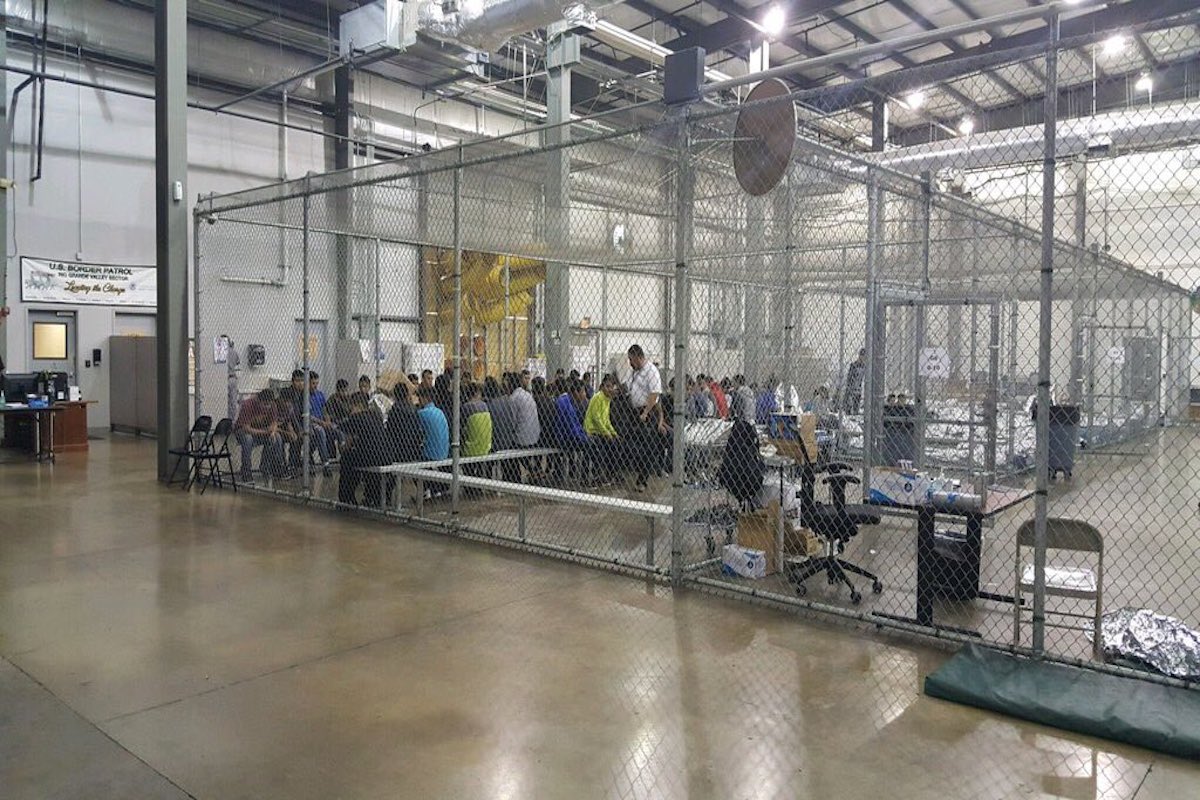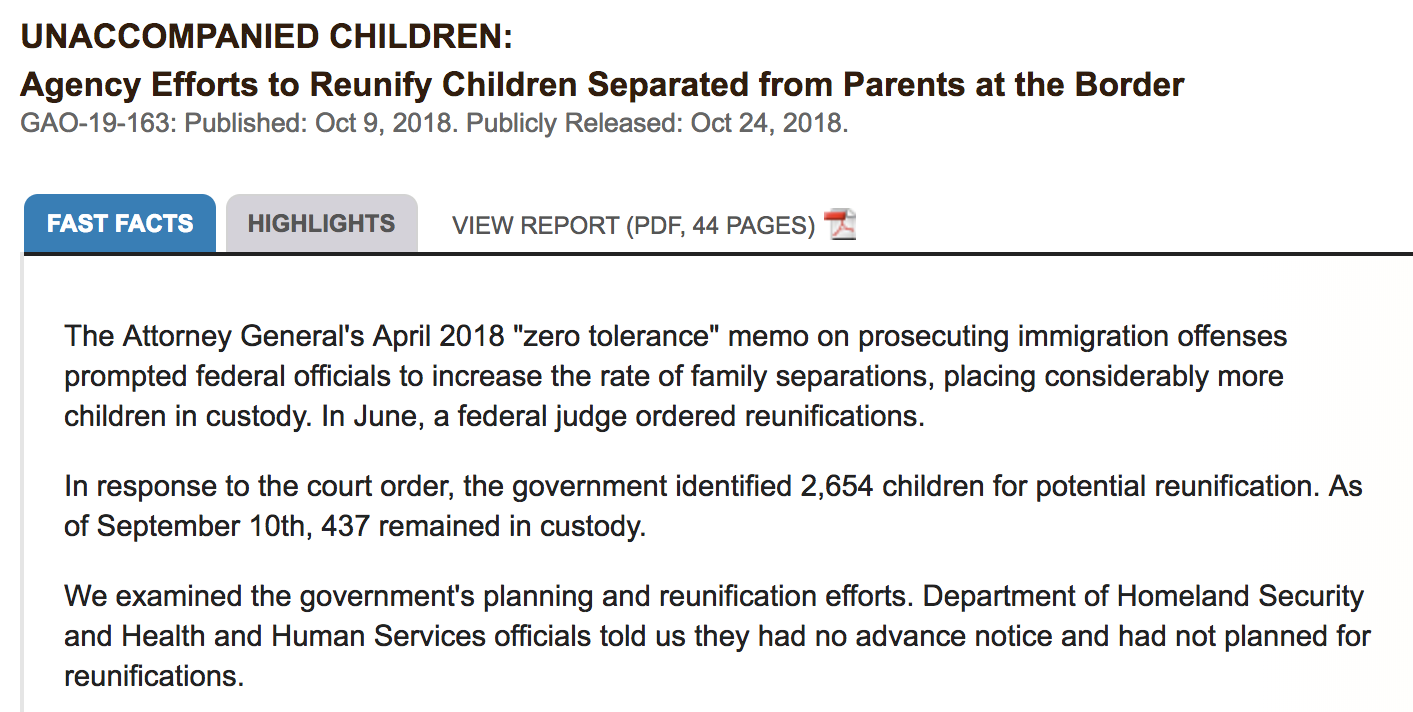

(Via US Customs and Border Protection)
On Wednesday morning United States Government Accountability Office released a report called, “UNACCOMPANIED CHILDREN: Agency Efforts to Reunify Children Separated from Parents at the Border.”
Here is what the GAO said about the report:
The Attorney General’s April 2018 “zero tolerance” memo on prosecuting immigration offenses prompted federal officials to increase the rate of family separations, placing considerably more children in custody. In June, a federal judge ordered reunifications.
In response to the court order, the government identified 2,654 children for potential reunification. As of September 10,437 remained in custody. [sic: that should be 437 not 10,347]
We examined the government’s planning and reunification efforts. Department of Homeland Security and Health and Human Services officials told us they had no advance notice and had not planned for reunifications.


(FYI, GAO has since fixed the 10,347 typo, saying, “This page has been updated to add a space between the date and the number of children who remained in custody.”)


It also expanded with this explanation:
What GAO Found
Department of Homeland Security (DHS) and Department of Health and Human Services (HHS) officials we interviewed said the agencies did not plan for the potential increase in the number of children separated from their parent or legal guardian as a result of the Attorney General’s April 2018 “zero tolerance” memo. These officials told GAO that they were unaware of the memo in advance of its public release. The memo directed Department of Justice prosecutors to accept for criminal prosecution all referrals from DHS of offenses related to improper entry into the United States, to the extent practicable. As a result, parents were placed in criminal detention, and their children were placed in the custody of HHS’s Office of Refugee Resettlement (ORR). DHS and ORR treated separated children as unaccompanied alien children (UAC)—those under 18 years old with no lawful immigration status and no parent or legal guardian in the United States available to provide care and physical custody.
Prior to April 2018, DHS and HHS did not have a consistent way to indicate in their data systems children and parents separated at the border. In April and July 2018, U.S. Customs and Border Protection and ORR, respectively, updated their databases to allow them to indicate whether a child was separated. However, it is too soon to know the extent to which these changes, if fully implemented, will consistently indicate when children have been separated from their parents, or will help reunify families, if appropriate.
In response to a June 26, 2018 court order to quickly reunify children separated from their parents, HHS determined how many children in its care were subject to the order and developed procedures for reunifying these families. The government identified 2,654 children in ORR custody who potentially met reunification criteria. On July 10, 2018, the court approved reunification procedures for the parents covered by the June 2018 court order. This order noted that ORR’s standard procedures used to release UACs from its care to sponsors were not meant to apply to this case, in which parents and children who were apprehended together were separated by government officials. DHS and HHS officials and staff at the ORR shelters GAO visited noted some challenges to reunification, including arranging communication between parent and child and coordinating transportation. As of September 10, 2018, 437 children remained in ORR custody for various reasons, such as ineligibility for reunification.
Here is the full report:


